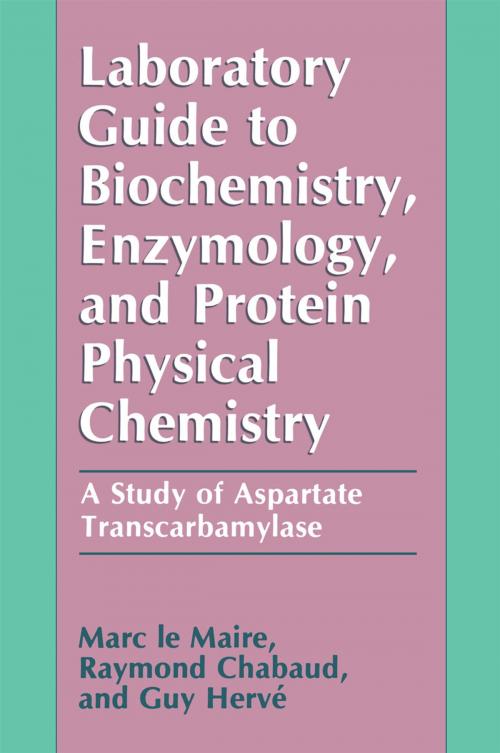Laboratory Guide to Biochemistry, Enzymology, and Protein Physical Chemistry
A Study of Aspartate Transcarbamylase
Nonfiction, Science & Nature, Science, Chemistry, Physical & Theoretical, Biological Sciences, Biochemistry| Author: | Raymond Chabaud, Marc le Maire, Guy Hervé | ISBN: | 9781461538202 |
| Publisher: | Springer US | Publication: | December 6, 2012 |
| Imprint: | Springer | Language: | English |
| Author: | Raymond Chabaud, Marc le Maire, Guy Hervé |
| ISBN: | 9781461538202 |
| Publisher: | Springer US |
| Publication: | December 6, 2012 |
| Imprint: | Springer |
| Language: | English |
The study of a single well-chosen substance, here aspartate transcarb amylase, can provide an excellent basis for a laboratory course. The student is introduced to a variety of scientific ideas and to many experi mental and interpretive techniques. This enzyme is readily available, is relatively stable, has an extensive literature, and its behavior has many facets: substrate inhibition, a large change in structure upon homo tropic activation by substrates, allosteric stimulation by ATP, allosteric inhibition by CTP synergistic with VTP, positive cooperativity for sub strates, negative cooperativity for CTP binding, and dissociation and reassembly of subunits Cand R2 from the holoenzyme CI\5. In addition 3 6 to the known biochemical aspects of these properties, the results ob tained here can be interpreted in the light of the high-resolution X-ray diffraction structures of the T and R forms, the low-angle X-ray scattering results, and the large number of mutants now available by recombinant DNA methods. Future development of this course could also involve part of these methods, as well as the carefully chosen experiments described here. This approach resembles research more than the approaches one usually finds in biochemical laboratory courses. A consistent develop ment of ideas about a single enzyme, which shows so many facets in its behavior, is sure to hold the interest of the student. Moreover, one explores a depth, and reasons to move forward, that are an essential part of research.
The study of a single well-chosen substance, here aspartate transcarb amylase, can provide an excellent basis for a laboratory course. The student is introduced to a variety of scientific ideas and to many experi mental and interpretive techniques. This enzyme is readily available, is relatively stable, has an extensive literature, and its behavior has many facets: substrate inhibition, a large change in structure upon homo tropic activation by substrates, allosteric stimulation by ATP, allosteric inhibition by CTP synergistic with VTP, positive cooperativity for sub strates, negative cooperativity for CTP binding, and dissociation and reassembly of subunits Cand R2 from the holoenzyme CI\5. In addition 3 6 to the known biochemical aspects of these properties, the results ob tained here can be interpreted in the light of the high-resolution X-ray diffraction structures of the T and R forms, the low-angle X-ray scattering results, and the large number of mutants now available by recombinant DNA methods. Future development of this course could also involve part of these methods, as well as the carefully chosen experiments described here. This approach resembles research more than the approaches one usually finds in biochemical laboratory courses. A consistent develop ment of ideas about a single enzyme, which shows so many facets in its behavior, is sure to hold the interest of the student. Moreover, one explores a depth, and reasons to move forward, that are an essential part of research.















